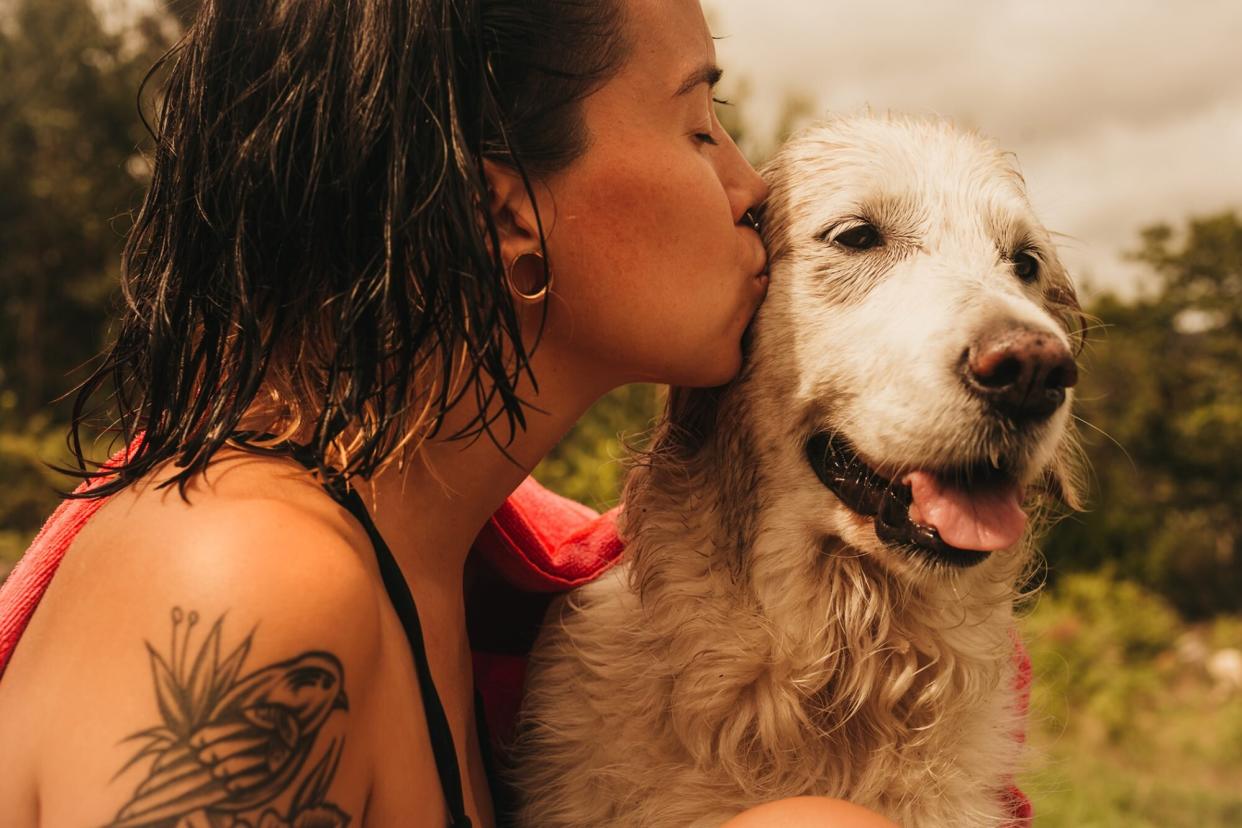Elbow Dysplasia in Dogs Can't Slow Your Pup Down From Enjoying Life to the Fullest

Maria Hormeno Diaz / Getty
Dogs, particularly our bigger boys and girls, love—and need—their exercise. Especially in a large backyard or a dog park. But some can't be as mobile as they wish to be in their imaginations due to various joint problems, whether it be a twisted ankle or something more serious, like arthritis or one of its predecessors: canine elbow dysplasia.
What Is Canine Elbow Dysplasia?
Canine elbow dysplasia (ED) is a genetic joint and/or tissue disease of one or both of a dog's front elbows.
Dog elbows are made up of three different bones: the radius, ulna, and humerus. ED manifests when these three bones have trouble fitting together like they should, leading to abnormal weight distribution that causes lameness.
ED is actually an umbrella term for multiple abnormalities concerning a canine's elbow joints, which can occur independently or in conjunction with one another in more severe cases. These conditions are typically inherited by larger dog breeds like the Bernese mountain dog or golden retriever but can affect most any canine.
RELATED: Does Your Dog Have Hip Dysplasia? What You Need to Know
Signs and Symptoms of Elbow Dysplasia in Dogs
Despite there being multiple versions of ED, the symptoms are the same.
Signs and symptoms of elbow dysplasia in dogs include:
Lameness of one or both front legs
Stiffness, especially after lying down or when it rains
Reluctance to exercise
Turned out feet
Lameness refers to an inability to properly use one or more limbs. It is most often associated with pain or injury and can manifest either within the first 5–7 months or during middle age, stressing the importance of being an attentive pet parent.
How Is Elbow Dysplasia Diagnosed?
Unfortunately, ED is the cause of many vet visits. According to surgeon Andrea Hayes, DVM, of VCA Boone Animal Hospital, elbow dysplasia is the most common cause of forelimb (front leg) lameness in dogs.
To confirm whether or not lameness is caused by ED, your veterinarian will most likely use a combination of clinical examination and x-rays. Clinical examination will allow the physician to watch your dog walk, trot, and stand on their own and take note of any mobility issues while x-rays typically show present arthritis or an ununited anconeal process (one form of ED). In some cases, CT scans or an MRI may be warranted for diagnosis.
How to Treat Elbow Dysplasia in Dogs
Pups diagnosed with elbow dysplasia can still live long, happy lives with the right treatment. Treatment's main goal is to prolong the onset of osteoarthritis and can include surgery, but also typically includes pain management.
"Treatment depends on the severity of symptoms," says Hayes. "Medical treatment can involve using a range of approaches, including but not limited to NSAIDS, nutraceuticals like glucosamine, stem cell therapy, exercise moderation, and physical therapy."
NSAIDs are a class of pain relievers that humans know in the forms of aspirin and ibuprofen, but vets can prescribe certain types to your dog in order to help with discomfort.
RELATED: These Are the Best Supplements for Dogs With Joint and Hip Issues
Living With Elbow Dysplasia
Although canine elbow dysplasia is an uncurable, long-term condition, it shouldn't shorten your dog's life so long as a few adjustments are made to your dog's routine.
Monitoring your pup's diet will become increasingly important so that you can keep their weight in a healthy range. The less joint stress, the better. With that will come a need to explore modified exercise options, especially ones that are low-impact.
Swimming is hailed as a great low-impact exercise for dogs, according to Canine Arthritis Resources and Education (CARE). It also helps increase limb mobility, which may help prevent or decrease stiffness that your dog usually deals with after exercise.
RELATED: How to Teach Your Dog to Swim—Whether You're Headed to the Beach or Pool
Walking on a leash with your dog is also a good low-impact activity, as you control their pace and terrain. This is preferred to activities such as running around a dog park, which is known as an uncontrolled activity that can stress your dog's joints due to you not being able to restrict their movement.
All in all, elbow dysplasia can prove to be uncomfortable for your best non-human friend. But with the right treatment and life modifications, they'll be happy and healthy for years to come.

